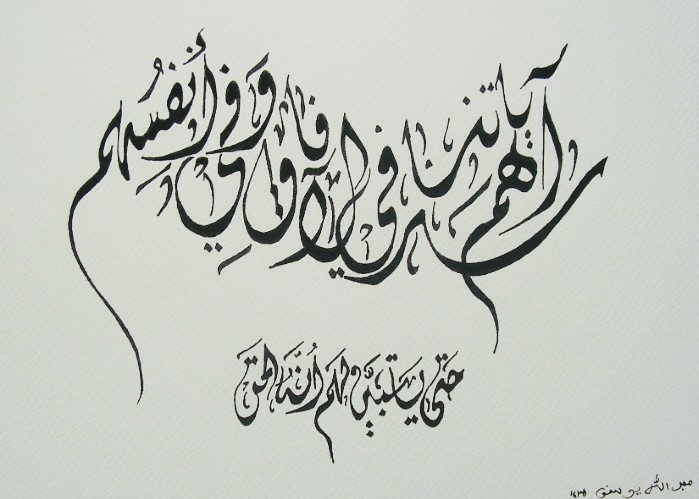Islamic Calligraphy Part 6 - The Diwani Writing
Diwani writing, or in Hungarian (Chancellery writing)
This writing was so named because the Chancellery of the Turkish Sultans issued his writings with this writing. A descendant of an older Turkish script, it first appeared on documents after 1453. This writing is one of the writings that the Turks not only used but also developed themselves.
It was later used by the Arabs as ornamental writing in addition to official documents (in fact, I would just like to note that the Arabs already use it more as an ornament than before, one of the most widely used forms of writing after the birth).
Formally, it is characterized by easy cursiveness, its interest is the unusual connection of letters and sometimes even whole words.
But let's look at a nice example:

Diwani Jali writing, in Hungarian the (sublime) Diwani
As we can see, this writing is an improved version of the Divanian writing style, which is also the merit of Turkish calligraphers. The Diwani writing, a more solemn, larger, thicker version, has been used since the 16th century.
Its main features include over-decoration and the use of signs or lines or sometimes dots that have no spelling value but decoration. thus the whole writing becomes an array that gives out geometric shapes. With this writing, they wrote the diplomas,,regulations, orders of the Turkish sultans, and the text of the honors and titles they donated.
But let's see a beautiful sublime Diwani writing, a beautiful Bismillah :):

After that, I turn to another writing, which cannot be called explicitly, for it was a kind of signature, but since it is also strongly connected to the names of the Turkish sultans and the Turkish chancellor, this is why I am writing about it here.
The tughra
Its origin can be linked to sulus writing, it became something with some Turkish help. There is a legend about it: According to a beautiful and instructive story, when the relationship between Timur Lenk (The Lame Timur), who was the Mongol ruler of Persia and Central Asia, and the Ottoman Sultan Bajjazid I. became tense. Timur sent an ultimatum to the sultan, only he was illiterate, so he could not authenticate the document with his signature, so he "sealed" it with his palmprint dipped in ink. According to tradition, his palmprint was first called the Tughra, and from that time on, it was said to have spread among the Ottoman sultans.
What was later developed to such a perfection that even the one whose name was written on could not read it much.
Today it is used as a decorative element in many places, Many bismillahs are also written in tughra at the beginning of book chapters or books, but also as a surviving signature on decorated documents.
Let's see a nice example of both, first combined with a tughra bismillah diwanian jali script :) The al ikhlas surah:

The other is again a very nice example of a tughra:

Anyone who may be even more interested in the Ottoman House and the Tughras of the Ottoman Rulers can find a wealth of information on Arabic and Turkish websites on the Internet.
Today I close my lines with this. Have a good browsing :)
Allah bless you.
Yusuf.


Add comment
Comments